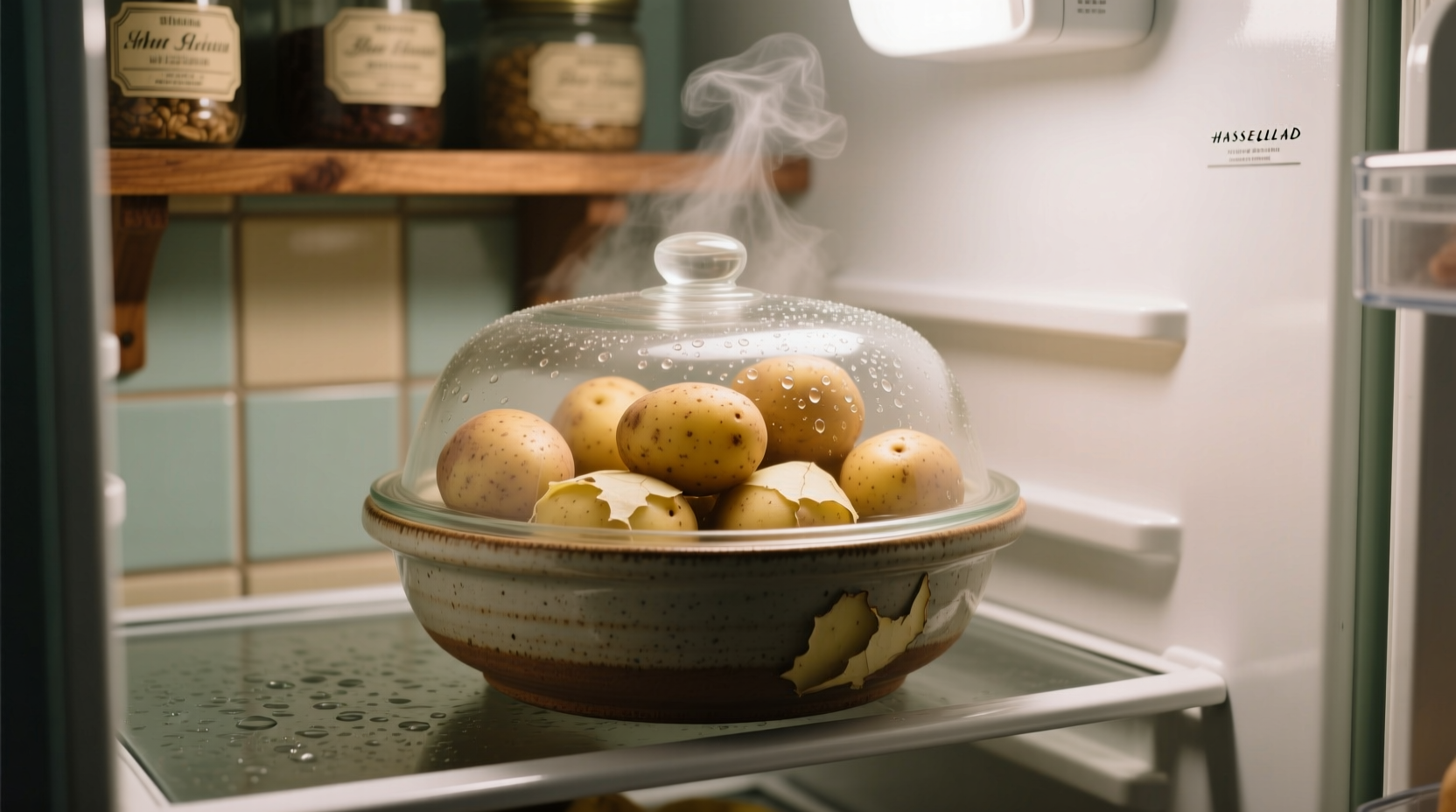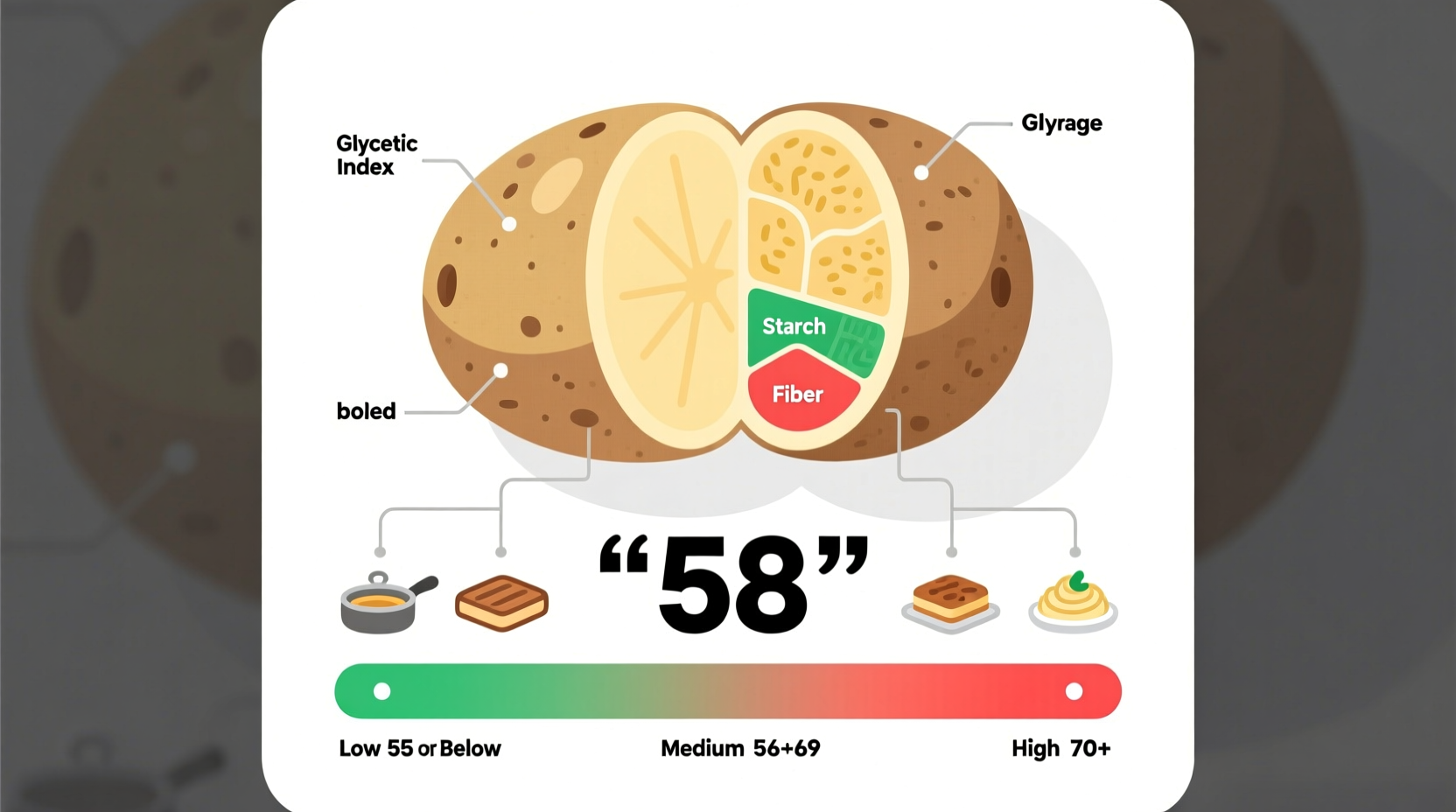Understanding the glycemic index of potatoes helps manage blood sugar levels while enjoying this versatile staple. Potatoes often get labeled as "bad carbs," but their actual impact on blood glucose depends heavily on variety, cooking method, and what you eat them with. Let's explore the science behind potato glycemic values and practical strategies for incorporating them into balanced meals.
What Exactly Is Glycemic Index?
The glycemic index measures how quickly carbohydrate-containing foods raise blood glucose levels compared to pure glucose (which has a GI of 100). Foods are classified as:
- Low GI: 55 or less
- Medium GI: 56-69
- High GI: 70 or higher
This measurement helps people with diabetes or blood sugar concerns make informed food choices. However, GI alone doesn't tell the whole story—portion size and food combinations significantly affect your actual blood sugar response.
Potato Varieties and Their Glycemic Impact
Different potato types show considerable variation in glycemic values. The table below presents verified measurements from multiple clinical studies:
| Potato Variety | Preparation Method | Average GI Value | Research Source |
|---|---|---|---|
| Russet | Baked | 82 | University of Sydney GI Database |
| Red Bliss | Boiled | 78 | American Journal of Clinical Nutrition |
| Sweet Potato | Baked | 82-94 | Diabetes Care Journal |
| Sweet Potato | Boiled | 44-50 | European Journal of Clinical Nutrition |
| Carisma | Boiled | 53 | Canadian Diabetes Association |
This comparison reveals why generalizations about "all potatoes" being high-GI are misleading. The Carisma variety, developed specifically for lower glycemic impact, falls in the medium range. Sweet potatoes show the most dramatic variation—baking significantly increases their GI compared to boiling.
How Cooking Methods Transform Glycemic Response
The way you prepare potatoes dramatically affects their blood sugar impact. Research shows a clear progression in how cooking alters starch structure:
- Raw potatoes contain resistant starch that passes through the digestive system largely intact (GI around 30-40)
- Cooking gelatinizes starch, making it more digestible and raising GI to 70-85
- Cooling cooked potatoes allows retrogradation, where starch molecules reorganize into resistant forms, lowering GI by 15-25%
- Reheating cooled potatoes maintains much of the resistant starch benefit (GI reduction of 10-20%)
A landmark 2018 study published in the Journal of Nutrition and Metabolism demonstrated that cooling boiled potatoes overnight reduced their glycemic response by 23% compared to eating them hot. This phenomenon explains why potato salad often causes less blood sugar spike than hot mashed potatoes.

Practical Strategies for Blood Sugar Management
You don't need to eliminate potatoes from your diet. These evidence-based approaches help minimize blood sugar impact:
Pairing Principles
Combine potatoes with:
- Fat sources (olive oil, avocado) to slow gastric emptying
- Protein (chicken, fish, beans) to moderate glucose absorption
- Fiber-rich vegetables (broccoli, spinach) to lower overall meal GI
Smart Preparation Techniques
- Cook potatoes al dente rather than overcooking
- Cool cooked potatoes before eating (even reheating maintains benefits)
- Leave skins on for additional fiber content
- Choose lower-GI varieties like Carisma or Désirée when available
Context Matters: When Potatoes Fit Your Diet
Potatoes aren't universally problematic. Consider these context boundaries:
- For athletes: High-GI potatoes provide quick energy replenishment post-workout
- For healthy individuals: Moderate portions of properly prepared potatoes rarely cause issues
- For diabetes management: Smaller portions of cooled potatoes paired with protein/fat work better than large servings of hot, mashed potatoes
- For weight management: Boiled and cooled potatoes increase satiety due to resistant starch
American Diabetes Association guidelines confirm that potatoes can be part of diabetes meal plans when portion-controlled and properly prepared. The key is understanding your personal glucose response through monitoring.
Debunking Common Potato Myths
Several misconceptions persist about potatoes and blood sugar:
- Myth: Sweet potatoes always have lower GI than white potatoes
Fact: Baked sweet potatoes often have higher GI than boiled white potatoes - Myth: All potatoes cause dangerous blood sugar spikes
Fact: Properly prepared potatoes in reasonable portions fit most healthy eating patterns - Myth: Potato skins contain most of the nutrients
Fact: While skins have fiber, key nutrients like potassium and vitamin C distribute throughout the potato
Research from Harvard T.H. Chan School of Public Health shows that how you eat potatoes matters more than whether you eat them. The same study found that people who consumed potatoes with vegetables and lean protein showed better metabolic markers than those eating fries or chips.
Putting Potato GI in Perspective
Compare potato GI values to other common foods:
- White bread: 70-85 GI
- Corn flakes: 80 GI
- Basmati rice: 50-58 GI
- Quinoa: 53 GI
- Apple: 36 GI
This comparison shows potatoes sit in the same range as many other carbohydrate staples. The difference lies in how we typically consume them—often in large portions and with minimal accompanying nutrients.
Your Action Plan for Smarter Potato Consumption
Implement these practical steps today:
- Choose lower-GI varieties like Carisma when available
- Boil rather than bake for lower glycemic impact
- Cool cooked potatoes before eating (even 30 minutes helps)
- Pair with protein and healthy fats in every meal
- Start with smaller portions (½ cup cooked) to assess your personal response
- Monitor blood glucose if managing diabetes to understand your individual reaction
Remember that overall dietary patterns matter more than single foods. The Mediterranean Diet, consistently ranked among the healthiest eating patterns, includes potatoes prepared with olive oil, herbs, and vegetables.











 浙公网安备
33010002000092号
浙公网安备
33010002000092号 浙B2-20120091-4
浙B2-20120091-4